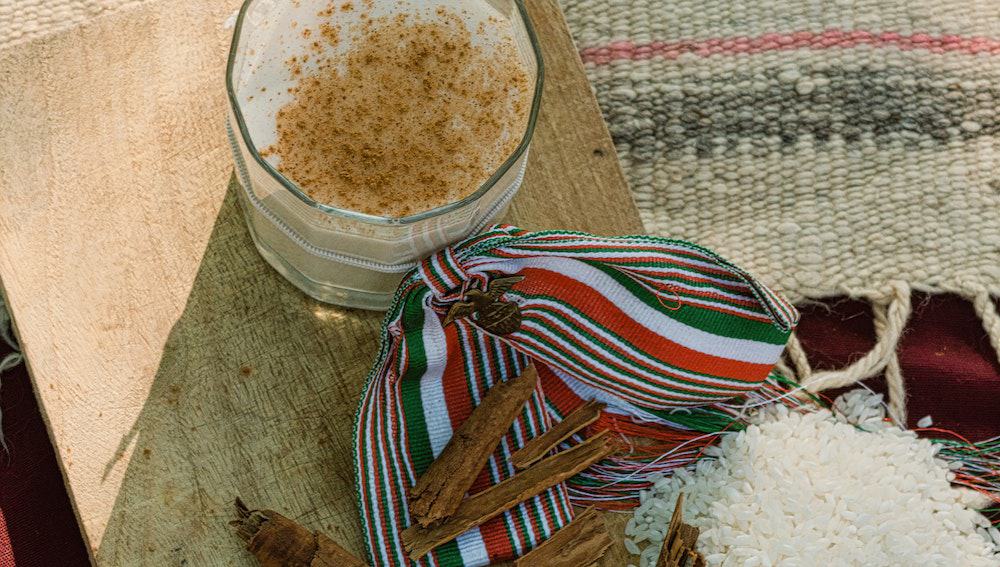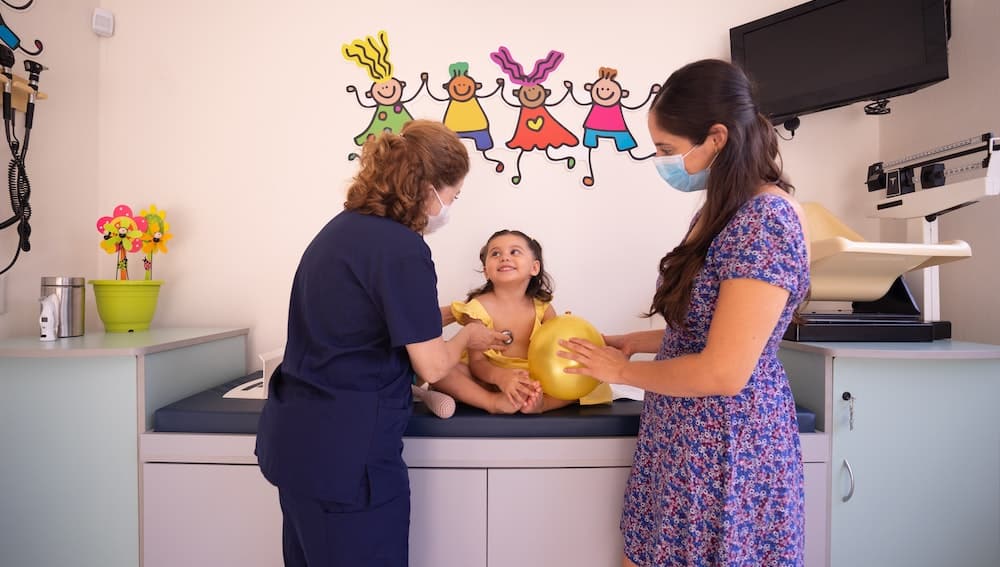Parents often wonder how much rice cereal to add to their baby’s bottle. Rice cereal is a popular first food for babies as it is easy to digest and unlikely to cause allergies. However, it is important to know the right amount to add as too much can be harmful to the baby’s health.
Understanding the Basics: Rice cereal is a type of baby food made from rice grains that have been ground into a fine powder.
It is often recommended as a first food for babies as it is easy to digest and fortified with iron. Rice cereal is usually mixed with breast milk or formula to create a thin, runny consistency that is easy for babies to swallow.
When to Start: It is generally recommended to start feeding rice cereal to babies between 4-6 months of age. Before introducing solid foods, babies should be able to sit up with support and have good head and neck control.
It is also important to consult with a pediatrician before introducing any new foods to a baby’s diet.
Key Takeaways
- Rice cereal is a popular first food for babies as it is easy to digest and unlikely to cause allergies.
- It is important to know the right amount to add to avoid harming the baby’s health.
- Rice cereal should be introduced to babies between 4-6 months of age with the guidance of a pediatrician.
Understanding the Basics
When it comes to feeding a baby, many parents wonder about the appropriate amount of rice cereal to add to a bottle. Rice cereal is a popular choice for introducing solid foods to infants, but it’s important to understand the basics before introducing it to a baby’s diet.
Rice cereal is a common first food for babies because it is easy to digest and unlikely to cause allergies. However, it should not be the only food a baby eats.
Breast milk or formula should still be the primary source of nutrition for the first six months of a baby’s life.
When introducing rice cereal, it is recommended to mix it with breast milk, formula, or water to create a thin, soupy consistency. A ratio of one tablespoon of cereal to four or five tablespoons of liquid is a good starting point.
It’s important to use a baby spoon to feed the cereal, rather than adding it to a bottle, as this can be a choking hazard.
It’s also important to introduce rice cereal gradually and in small quantities. A baby’s digestive system is still developing, so too much cereal can cause constipation or diarrhea.
Start with a small amount, such as one teaspoon, and gradually increase the quantity as the baby’s appetite and motor skills develop.
It’s important to consult with a pediatrician or feeding expert before introducing any new foods to a baby’s diet. They can provide guidance on appropriate quantities and timing for introducing solids based on the baby’s age, weight, and development.
In summary, rice cereal can be a nutritious addition to a baby’s diet when introduced gradually and in small quantities.
It should not be the only food a baby eats and should be mixed with breast milk, formula, or water to create a thin consistency. Consult with a pediatrician or feeding expert for guidance on introducing solids to a baby’s diet.
When to Start
Introducing solids is an important milestone in an infant’s development. The American Academy of Pediatrics recommends waiting until an infant is at least 4 months old before introducing solid foods, including rice cereal.
Before introducing solids, infants should be able to sit upright with support and have good head control. This is important for safe swallowing and to prevent choking.
Newborns are not developmentally ready for solids and should be exclusively breastfed or formula-fed for the first 4-6 months of life.
When an infant is around 4 months old and has good head control, parents can start introducing solids. However, it’s important to remember that every infant is different and may reach this milestone at different times.
It’s also important to note that rice cereal should not be the first food introduced to an infant. Instead, parents should start with single-ingredient pureed fruits or vegetables to help infants get used to new tastes and textures.
In summary, parents should wait until their infant is around 4 months old and has good head control before introducing solids. Rice cereal should not be the first food introduced, and parents should start with single-ingredient pureed fruits or vegetables.
How to Mix
Mixing rice cereal with a baby’s bottle can be a bit tricky, but it is an effective way to introduce solid foods to an infant.
Here are some tips on how to mix rice cereal with a bottle:
- Start with a clean bottle and nipple. Sterilize them if necessary.
- Measure out the desired amount of rice cereal. Most pediatricians recommend starting with 1 tablespoon of rice cereal per 4-6 ounces of liquid.
- Add the rice cereal to the bottle.
- Add the desired amount of liquid to the bottle. This can be breast milk, formula, or water.
- Screw on the nipple and shake the bottle vigorously to mix the rice cereal with the liquid. Make sure there are no clumps.
- Check the temperature of the mixture. It should be lukewarm, not too hot or too cold.
- Feed the baby with the mixed rice cereal using a baby spoon.
It is important to note that rice cereal should not be added to a bottle that already contains milk or formula. This can increase the calorie content of the mixture and may cause the baby to overeat.
Additionally, it is recommended to start with a small amount of rice cereal and gradually increase the ratio of rice cereal to liquid as the baby becomes more accustomed to solid foods.
Overall, mixing rice cereal with a bottle can be a great way to introduce solid foods to a baby. With the right ratio of rice cereal to liquid and careful mixing, parents can ensure that their baby is getting the nutrition they need.
Potential Risks
While some parents may choose to add rice cereal to their baby’s bottle, there are potential risks to consider. Here are a few:
Choking
Adding rice cereal to a bottle can increase the risk of choking. The thick consistency of the mixture can make it difficult for a baby to swallow, and the rice grains can get stuck in their throat.
Allergies
Rice cereal is a common allergen, and introducing it too early can increase the risk of an allergic reaction. Symptoms of an allergic reaction can include hives, swelling, and difficulty breathing.
Reflux
Adding rice cereal to a bottle can worsen reflux symptoms in some babies. The thick consistency of the mixture can cause the contents of the stomach to come back up into the esophagus.
Arsenic
Rice cereal has been found to contain arsenic, a toxic substance that can cause health problems with prolonged exposure. While the levels of arsenic in rice cereal are generally low, it is still a concern for some parents.
Diarrhea and Constipation
Introducing rice cereal too early can also cause digestive issues such as diarrhea or constipation. Babies may not be able to digest the rice properly, leading to discomfort and other health problems.
Obesity and Sugar
Adding rice cereal to a bottle can also contribute to obesity and other health problems later in life. Rice cereal is high in carbohydrates and can be a significant source of added sugar, which can lead to weight gain and other health issues.
Vomiting and Sensitivity
Some babies may be sensitive to rice cereal and experience vomiting or other symptoms after consuming it. It is essential to monitor your baby’s reactions and speak with a healthcare provider if you have any concerns.
Acid Reflux
Rice cereal can also exacerbate acid reflux symptoms in some babies, leading to discomfort and other health problems.
Overall, while rice cereal may be a popular choice for some parents, it is essential to consider the potential risks before adding it to your baby’s bottle. It is always best to speak with a healthcare provider before making any changes to your baby’s diet.
Alternatives to Rice Cereal
While rice cereal is a popular choice for introducing solid foods to babies, there are other options available. Here are some alternatives to rice cereal that parents can consider:
Oatmeal Cereal
Oatmeal cereal is a good alternative to rice cereal as it is easy to digest and contains high levels of fiber. It also provides a good source of iron, which is important for a baby’s development. Oatmeal cereal can be mixed with breast milk or formula to create a smooth consistency.
Barley Cereal
Barley cereal is another option that is high in fiber and provides a good source of iron. It is also a good source of protein and can be mixed with breast milk or formula to create a smooth consistency.
Pureed Fruit and Vegetables
Pureed fruit and vegetables are a great alternative to cereal. They provide a variety of nutrients and can be easily prepared at home. Some good options include sweet potato, avocado, banana, and apple.
Iron-Fortified Cereal
Iron-fortified cereal is another option to consider. It is similar to rice cereal but contains added iron, which is important for a baby’s development. Some good options include oatmeal cereal and barley cereal.
Dairy
Dairy products such as yogurt and cheese can also be introduced to babies as a source of protein and calcium. However, it is important to choose low-fat or non-fat options and to avoid introducing cow’s milk until after the first year.
Fish and Peanuts
While it is important to introduce a variety of foods to babies, it is recommended to wait until after the first year to introduce fish and peanuts. This is because they are common allergens and can cause a severe allergic reaction.
In conclusion, there are many alternatives to rice cereal that parents can consider when introducing solid foods to their babies. It is important to choose foods that are easy to digest and provide a variety of nutrients.
Consulting a Pediatrician
It is always recommended to consult a pediatrician before introducing rice cereal to a baby’s diet. A pediatrician can provide guidance on the appropriate amount of rice cereal to add to a bottle, as well as the best time to start introducing solid foods to the baby’s diet.
Pediatricians can also provide information on the potential risks associated with adding rice cereal to a bottle, such as the risk of choking or developing allergies.
They can also monitor the baby’s development and weight gain to ensure that the addition of rice cereal is appropriate for the baby’s individual needs.
If a baby has a history of allergies or sensitivity to certain foods, it is especially important to consult a pediatrician before introducing rice cereal to the baby’s diet.
The pediatrician can provide guidance on how to safely introduce new foods and monitor the baby for any signs of an allergic reaction.
In addition, if a baby experiences constipation or other digestive issues after the introduction of rice cereal, a pediatrician can provide guidance on how to adjust the amount or timing of the rice cereal to alleviate these issues.
Overall, consulting a pediatrician is an important step in introducing rice cereal to a baby’s diet. They can provide valuable guidance and support to ensure that the baby’s development and health are prioritized.
Conclusion
In conclusion, there is no definitive answer to how much rice cereal should be added to a baby’s bottle.
While some parents and pediatricians recommend adding rice cereal to a baby’s bottle to help with reflux or to help the baby sleep through the night, others caution against it due to potential choking hazards and concerns about overfeeding.
It is important for parents to consult with their pediatrician before making any changes to their baby’s diet or feeding routine.
The amount of rice cereal that may be appropriate for one baby may not be appropriate for another, and a pediatrician can provide guidance based on the individual needs of the baby.
Additionally, parents should be aware of the potential risks associated with adding rice cereal to a bottle, including choking and overfeeding. If parents do choose to add rice cereal to their baby’s bottle, they should do so in moderation and under the guidance of their pediatrician.
Overall, while rice cereal may be a helpful addition to some babies’ diets, it is important for parents to approach it with caution and to prioritize the safety and well-being of their child above all else.
Also, read some related posts:
Frequently Asked Questions
What is the recommended amount of rice cereal to add to a bottle for a 6 month old?
The American Academy of Pediatrics recommends that parents start with 1 to 2 tablespoons of rice cereal per 4 to 6 ounces of formula or breast milk. However, it is important to consult with a pediatrician before introducing any solid foods to a baby’s diet.
How much rice cereal should I put in a 4 oz bottle?
For a 4 oz bottle, it is recommended to start with 1 tablespoon of rice cereal mixed with 4 oz of formula or breast milk. As the baby gets used to the texture and taste, parents can gradually increase the amount of cereal.
How much oatmeal cereal should I put in a 6 oz bottle?
For a 6 oz bottle, parents can start with 1 to 2 tablespoons of oatmeal cereal mixed with 6 oz of formula or breast milk. As with rice cereal, it is important to consult with a pediatrician before introducing oatmeal cereal to a baby’s diet.
Is it safe to put rice cereal in a baby’s bottle?
While some parents may add rice cereal to a baby’s bottle to help with reflux or to help the baby sleep longer, it is not recommended by the American Academy of Pediatrics.
Adding cereal to a baby’s bottle can increase the risk of choking and may lead to overfeeding.
Can adding cereal to formula help with reflux?
While some parents may find that adding cereal to formula helps with reflux, there is no scientific evidence to support this claim. In fact, adding cereal to a baby’s bottle can actually increase the risk of reflux.
What are the dangers of giving rice cereal to babies?
Giving rice cereal to babies before 4 to 6 months of age can increase the risk of developing food allergies and may also lead to overfeeding, constipation, and other digestive issues.
It is important to consult with a pediatrician before introducing any solid foods to a baby’s diet.

Iesha is a loving mother of 2 beautiful children. She’s an active parent who enjoys indoor and outdoor adventures with her family. Her mission is to share practical and realistic parenting advice to help the parenting community becoming stronger.



